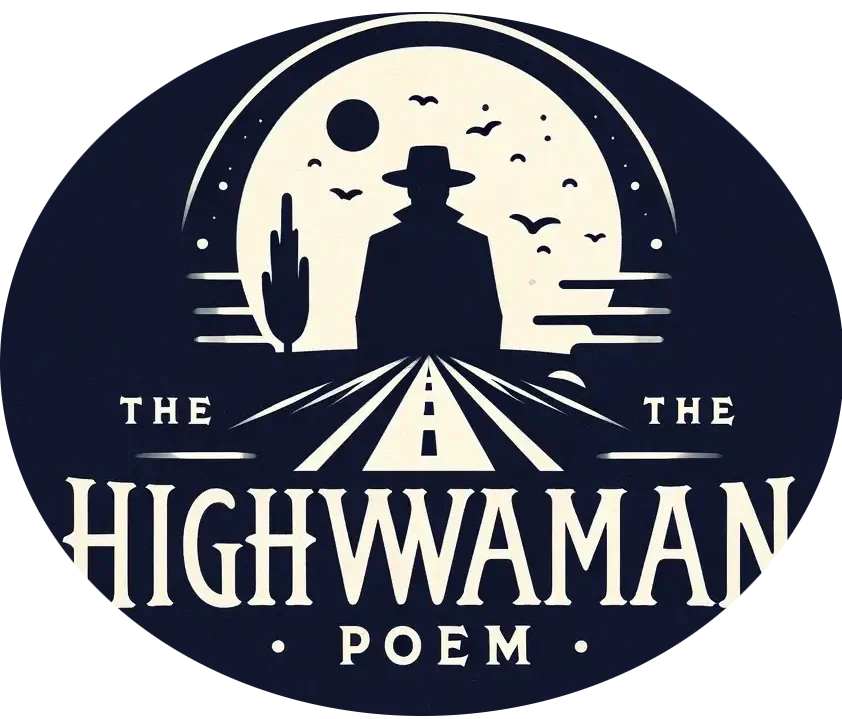Welcome to our detailed analysis of the renowned poem, “The Highwayman” by Alfred Noyes.
Within this discourse, we shall explore the essential information pertaining to the poem, provide a concise summary of its enthralling narrative, conduct a comprehensive examination of its structural composition and poetic devices, and scrutinize the tragic figure of Bess.
Additionally, we will delve into the overarching themes and motifs of love, desire, disappointment, fear, adversity, heartbreak, violence, and Gothic elements that collectively establish this poem as a timeless masterpiece of literature.
We invite you to accompany us on this profound journey through the evocative realm of “The Highwayman.”
Key Takeaways of The Highwayman Bess :
- Bess is a tragic heroine in Noyes’ poem, The Highwayman, whose love and loyalty ultimately lead to her downfall.
- Bess’s character is portrayed as brave, passionate, and fiercely independent, yet she is ultimately a victim of her circumstances and society’s expectations.
- Noyes uses poetic techniques, such as repetition and descriptive language, to highlight Bess’s tragic fate and evoke emotions of fear, love, and heartbreak in the reader.
Key Poem Information
“The Highwayman,” authored by Alfred Noyes, is a narrative poem that made its debut in Blackwood’s Magazine in 1906. The poem’s poignant narrative of love, betrayal, and sacrifice enthralled audiences and cemented Noyes’ reputation as a skilled wordsmith.
Comprised of a sequence of intense scenes, the poem unfolds akin to an enthralling theatrical production, with vivid depictions and poetic language evoking an atmosphere of suspense and calamity. Drawing from a background in lyrical poetry, Noyes introduced a distinctive style to “The Highwayman,” amalgamating traditional ballad components with a contemporary flair.
This amalgamation of archaic and innovative techniques underscores Noyes’ adaptability and artistic ingenuity, positioning the poem as a perennial masterpiece in the realm of English literature.
Summary of The Highwayman
The narrative presented in “The Highwayman” delves into the tragic tale of a charismatic highwayman and his beloved Bess, the daughter of the innkeeper, whose affection ultimately leads to a fatal confrontation with the military forces. Their fervent and swift relationship unfolds amidst a backdrop of peril and deceit, with the envious stableman, Tim, revealing the highwayman’s intentions to the soldiers in exchange for ensuring Bess’s safety. This act of betrayal culminates in a poignant conclusion where the highwayman tragically meets his demise while attempting to reunite with Bess. The poem employs evocative imagery and detailed depictions to portray the depth of their love and the unavoidable calamity that unfolds.
Structure of The Highwayman
The structure of “The Highwayman” is distinguished by its utilization of regular stanzas, hexameter lines, and a rhythmic pattern consisting of anapaests and iambs. Noteworthy employment of enjambment and repetition further enhances the poem’s lyrical quality.
The alternating incorporation of anapaests and iambs generates a vibrant and melodic rhythm within the poem, contributing to its vivid storytelling. Enjambment, a technique where poetic ideas extend beyond line breaks, fosters a sense of anticipation and propels the narrative forward, captivating the reader with immediacy and momentum.
Furthermore, the deliberate repetition, exemplified by the recurring phrase “The highwayman came riding, riding, riding,” serves to emphasize central themes and elicit a haunting, almost mesmerizing effect that pervades the narrative.
Poetic Techniques in The Highwayman
The poem “The Highwayman” employs a variety of poetic techniques to enhance its dramatic portrayal. These techniques include vivid imagery, metaphor, alliteration, simile, personification, and onomatopoeia, all contributing to the vividness and intensity of the depicted scenes.
The utilization of vivid imagery within the poem serves to intricately depict the moonlit highway and the mysterious figures traversing the night. By incorporating metaphorical language to describe the love shared between the highwayman and Bess, a profound sense of passion and yearning is evoked, resonating with the audience. The deliberate use of alliteration, exemplified in phrases like ‘ghostly galleon,’ infuses a melodic quality into the narrative. Similarly, similes such as ‘like a torch in the storm‘ heighten the emotive impact of specific instances. Personification lends vitality to inanimate objects, transforming them into active participants within the narrative, while onomatopoeia, such as the repetitive ‘tlot-tlot, tlot-tlot‘ denoting the sounds of the highwayman’s horse, introduces a rhythmic element that intensifies the urgency and suspense of the poem.
Analyzing the Tragic Heroine in Noyes’ Poem
In The Highwayman, the character Bess epitomizes profound love and steadfast courage. Her passionate and selfless deeds serve to underscore the tragic repercussions of love and jealousy depicted within the poem.
Part I Analysis
The first part of The Highwayman introduces the romantic and perilous encounter between the highwayman and Bess, which unfolds in the moonlit inn-yard. Here, Bess adorns her long black hair with a love-knot and anxiously awaits her lover with her red lips slightly parted.
The ethereal ambiance of the inn-yard is enriched by the cascading moonlight that envelops the setting in a gentle luminescence, establishing a captivating backdrop for their secretive meeting. The palpable sense of anticipation is accentuated as Bess stands in eager anticipation, her heart pulsating with a mixture of apprehension and desire for the highwayman’s imminent arrival.
The inn-yard itself assumes a character within the unfolding narrative, with its interplay of shadows and concealed truths heightening the allure of their forbidden affection. Through these vivid portrayals, the relationship between the highwayman and Bess is intricately interwoven into the tapestry of the night, creating a bond that transcends the physical realm.
Part II Analysis
In the second part of the narrative, Bess’s story culminates tragically as she valiantly sacrifices herself to forewarn the highwayman of the imminent threat posed by the red coats, utilizing a purloined musket to convey her message of love and ultimately succumbing to her demise.
This significant juncture serves to underscore Bess’s unyielding courage and profound dedication to the highwayman amid exceedingly adverse circumstances. Through her selfless deed, the overarching themes of love and sacrifice are conveyed with poignant clarity, emphasizing the profound influence of their bond on the evolving storyline.
Bess’s resolute resolve to safeguard her beloved initiates a sequence of events that lead to a heart-rending and sorrowful denouement, emphasizing the potency of love in motivating action and transcending even the most formidable challenges.
Poetry Review: Themes and Elements in The Highwayman
Alfred Noyes’ work, “The Highwayman,” delves into a complex array of themes and elements, skillfully intertwining romantic ideals with evocative, tense imagery to craft a narrative that captivates readers with its vivid portrayals and profound emotional resonance.
Love and Desire
Love and desire play a central role in “The Highwayman,” as evidenced by the intense connection between Bess and the highwayman, symbolized by the love-knot in her hair and their clandestine moonlit rendezvous.
Their relationship transcends societal conventions, with Bess demonstrating profound devotion by risking her safety to forewarn the highwayman of the impending redcoat ambush. This act of selflessness underscores the profound nature of their love and the sacrifices they are prepared to make for one another.
Despite the tragic conclusion of their tale, their love endures in its enduring intensity, compelling both characters to make decisions that ultimately determine their fates. It is this steadfast love and desire for one another that drive the narrative forward, influencing the choices and behaviors of the characters throughout the poem.
Disappointment and Fear
The themes of disappointment and fear are masterfully depicted in The Highwayman, particularly through the fraught interactions with the red coats and Bess’s palpable trepidation as she awaits her fate under the moonlight. The poem expertly delves into the intricacies of human emotions, demonstrating how disappointment can stem from shattered hopes and unmet expectations, while fear looms ominously, intensifying the narrative’s suspense.
As the plot progresses, the reader is immersed in the characters’ internal struggles, experiencing the profound impact of their fears and the bitterness of their letdowns. This emotional voyage serves to emphasize the significant influence these themes wield over the narrative as a whole, rendering it a truly enthralling piece of literary artistry.
Adversity and Heartbreak
Adversity and heartbreak are central themes in The Highwayman, portraying the lovers’ journey fraught with insurmountable challenges culminating in tragic outcomes, leaving their tale permanently etched with elements of bloodshed and bereavement.
The poem captivates readers by immersing them in a realm where themes of treachery and selflessness intermingle with sentiments of ardor and fidelity. The fearless determination of the titular Highwayman in his pursuit of his beloved Bess despite formidable obstacles underscores the unwavering essence of love amidst perilous circumstances.
As the storyline progresses, the evocative depiction of moonlit thefts and fatal betrayals intensifies the emotional resonance of their ill-fated bond. The poignant climax unveils the ultimate sacrifices made by both protagonists, echoing the enduring motif of love transcending mortality in the face of overwhelming adversities.
Violence and Gothic Elements
The poem “The Highwayman” is rich with violence and gothic elements, evoking a dark and ominous tone through various literary devices. The narrative is punctuated by the chilling gazes of the red coats and the spectral appearance of a ghostly galleon, which together intensify the bleak atmosphere.
Violence in the poem is vividly portrayed in the relentless pursuit of the daring highwayman by the unforgiving red coats. Imageries of crimson blood and the thunderous sound of hooves pounding through the night further enhance the narrative’s dramatic tension.
Moreover, Gothic elements are accentuated through the character of Bess, the innkeeper’s daughter, who tragically sacrifices herself to shield her beloved highwayman. This act of devotion unfolds against a backdrop of moonlit moors and echoing gunshots, contributing to the eerie and haunting ambiance of the poem.
Frequently Asked Questions
1. Who is Bess in Noyes’ poem “The Highwayman” and why is she considered a tragic heroine?
Bess is the love interest of the highwayman in Noyes’ poem and is considered a tragic heroine because she ultimately sacrifices her life for the man she loves. Despite her love for the highwayman, she is unable to escape her tragic fate.
2. How does Bess’ role as a tragic heroine compare to other female characters in literature?
Bess’ character can be compared to other tragic heroines in literature, such as Juliet from Shakespeare’s “Romeo and Juliet” or Ophelia from “Hamlet”. Like these characters, Bess is caught in a tragic love story and ultimately meets a tragic end.
3. What symbolic significance does Bess hold in Noyes’ poem “The Highwayman”?
Bess is a symbol of love, loyalty, and sacrifice in the poem. Her love for the highwayman is so strong that she is willing to risk her life for him. Her loyalty to him is shown when she warns him of danger, and her ultimate sacrifice for him is a testament to her unwavering love.
4. Why is Bess often portrayed as a victim in interpretations of “The Highwayman”?
Bess is often portrayed as a victim because she is caught in a tragic love story and is ultimately a casualty of the highwayman’s actions. Despite her own bravery and strength, she is unable to escape the consequences of being in love with a notorious criminal.
5. In what ways does Bess’ character defy societal expectations in “The Highwayman”?
Bess defies societal expectations by being a strong, independent woman who is unafraid to love a notorious highwayman. She also defies expectations by being a willing participant in the highwayman’s crimes, showing her bravery and loyalty to him.
6. How does Bess’ tragic end contribute to the overall theme of love and sacrifice in “The Highwayman”?
Bess’ tragic end serves as a prime example of the ultimate sacrifice for love in the poem. Her willingness to die for the highwayman showcases the power of love and the lengths to which one will go for the person they love. Bess’ sacrifice also emphasizes the tragic consequences of forbidden love.

